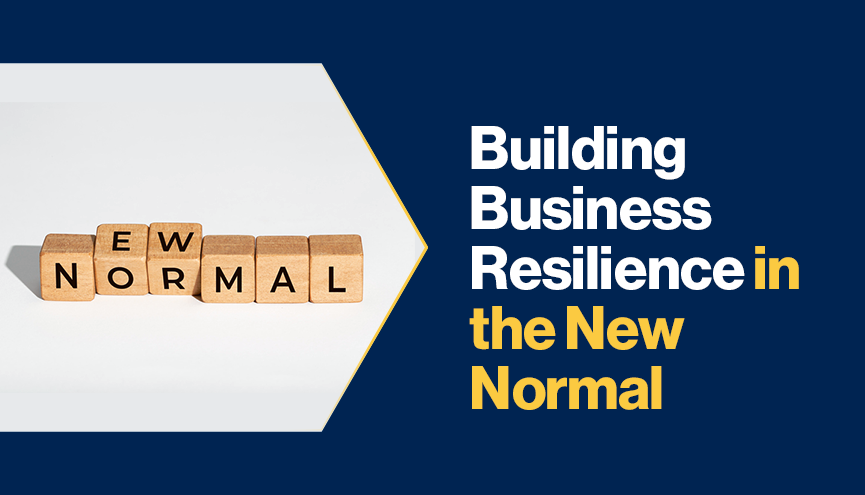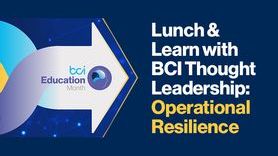Women in Resilience (WiR): Building Business Resilience in the New Normal

Author: Kavitha Srinivasulu, Head Cybersecurity & Data Privacy, GAVS Technologies, India
In recent times, the COVID-19 pandemic has rendered most existing business continuity solutions & notions on preparedness as ineffective. It is now almost certain that, to become more resilient to COVID-19 and other unforeseen disruptions, often manifesting simultaneously, Organizations will need to embrace a holistic definition of Organizational Risk that extends to people safety, building workplace controls, cyber & privacy safety, adherence to regulatory needs and government compliance and a host of other risk & impact aspects.
The pandemic has changed realities across the Globe. COVID-19 phase has changed the reality everywhere and its pandemic situation has intensely changed social, economic, and political normalcy around the world. As organizations around the world have taken lot of steps to steer and forecast what's coming next, good risk practices and industry standards for helping businesses adapt and reshape their organizations resilience model has taken centre stage. Organizations are increasing innovating and working on & seeking new ways to build resilience and adapt to evolving & changing trends to move forward.
As countries around the world are slowly recovering and anxious to return to the office, there is a need for considering the steps they must take to protect their most important assets; employees, suppliers, customers and all other interested parties. Intensifying these challenges, the change in working culture during pandemic has brought in lot of changes and new elements of risk to their business operations. During the pandemic, not only the public health get affected but its effects have also extended to include legal, regulatory and safety compliance, as well as fundamental elements of business operations.

As is evident from the Global Risk landscape of 2021 by World Economic Forum, this varied & almost evident set of risks, across the gamut of Economic, Environmental, Geopolitical, Societal & Technological has left the organisations scrambling for practical solutions to ensure continue of their operations.
Organizations have always considered business continuity as a business strategy to recover operations effectively in times of disaster. These solutions were designed with a considerable level of events in mind. However, the pandemic has broken the history or mindsets in business recovery. Unlike previous disruptions or disasters, it is proving to be a persistent global calamity that existing business continuity solutions are incapable of handling. To understand why consider the detailed challenges of reopening a business amid COVID-19.

Emerging risks that impede the operational resiliency of an organization come in many forms & strike in unexpected ways, often causing a huge impact with respect to reputation, customer satisfaction, financial loss, regulatory compliance, etc. Organizations not only have to manage their own risk, but also that of their critical vendors & third-parties because the controls and responsibilities at the supplier’s end is an open challenge faced globally. Engaging with suppliers & vendors needs a robust business resilience model to monitor the third-party services on an ongoing basis through performance and resiliency metrics, joint tests of resiliency measures.
Also, with the level of enormous quantum & sensitivity of data that organizations work with, Business leaders need to factor business intelligence, often using the power of Artificial Intelligence to secure the data, applications, etc in order to ensure Privacy & Information security, which is a concern in the new emerging trend of working in a hybrid or remote model.
Key takeaways for Organisations to factor:
- Operate within a robust Business resilience model, thereby having an intrinsic advantage in handling the unexpected situations in a well organised manner
- Ensure presence of a Business Continuity & Disaster Recovery team, necessary procedures & tools for Crisis Management
- Prioritize people's safety
- Prioritize important business services
- Integrate business control functions and build effective risk management
- Leverage the existing controls with Artificial Intelligence, Machine Learning, IOT etc to develop business capabilities
- Redesign business recovery processes for the long term
- Assess, simulate, and reshape to stay resilient
- Manage business resiliency across suppliers/ third parties
- Plan, Monitor, Evaluate and Review on an ongoing basis

Digital transformation trends in next few years require major changes in organizational approaches and change in the mindsets to come out of the usage of old legacy systems. Organizations are now learning quickly on how the threats and vulnerabilities in people, security, governance, compliance, operations, customer tolerances, and finances can disrupt the chain of business continuity during a crisis, whether it is a pandemic or natural disaster or man-made or technology failures or social upheaval.
The COVID-19 situation has stirred the development of new technologies or solutions that leverage the AI (Artificial Intelligence) and other data sources to identify, understand, predict, and recommend actions that will help organizations in business recovery and in building robust businesses that are resilient in nature.
We cannot prevent disasters or crises events but we can definitely learn from the past incidents, especially of the last two years and prepare ourselves.









































